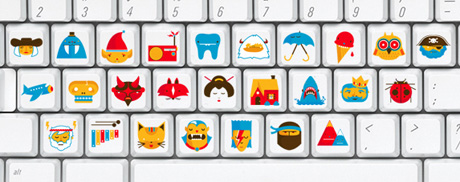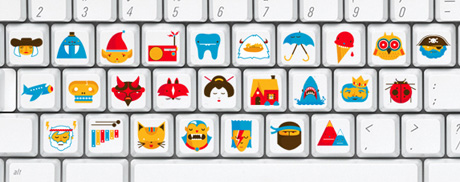Compress images in Visio
This morning, I realized my Visio wireframe was taking longer and longer to save. Totally out of curiosity, and because [...]

My boyfriend has just forwarded me a link to this beautiful picture keyboard, designed by Christopher Monro Delorenzo. The concept is simple: replace each letter by a picture related to it. So, basically, the pirate character stands for P, etc. The design is really cute, and I found the idea interesting, speaking about usability: who could use it? And speaking about a keyboard, what about the muscle memory?

In his article, the designer says it could help children learn letters. As he recalls, alphabet classes often use posters featuring a letter and a picture associated to this letter. These posters are mnemonics: they help remember a complicated and abstract concepts by associating them with familiar representations. I have the feeling this keyboard could be useful in the alphabet learning process, but it misses one thing to do so: the association with the concept. If the letters were added on the keys, then the keyboard would really help learn letters.
When we see posters with a letter and a picture everywhere in the room, all day long, our visual memory tends to associate and remember them. That’s one way of learning. But there are other ways, involving our 5 senses. Speaking about computers, our sense of touch is more involved. Persons who are used to typing on a keyboard usually don’t need, or need less, to refer to the visual memory: their muscle memory plays a great role in remembering the position and moves between the different keys. So maybe the visual mnemonic is not so useful, as the muscle memory is more involved. Remember touch typists learn to type with the letters hidden?
Even if this keyboard would become less relevant for a good typist (who would rather use her muscle memory), it remains a good tool to learn alphabet, if letters are added on the keys.
